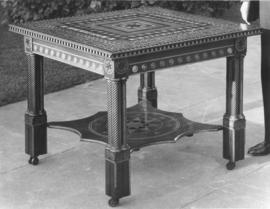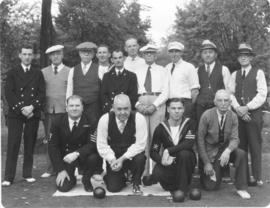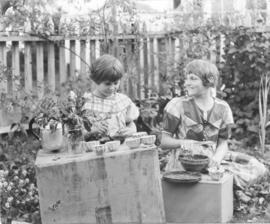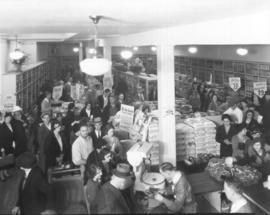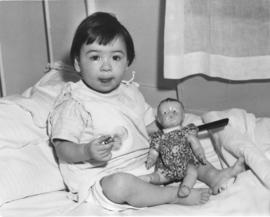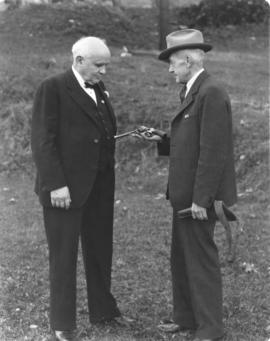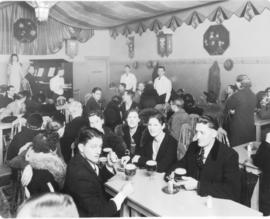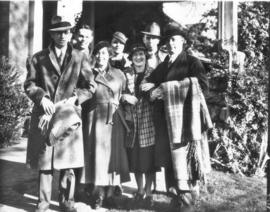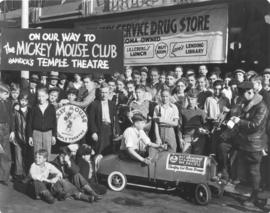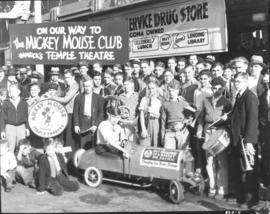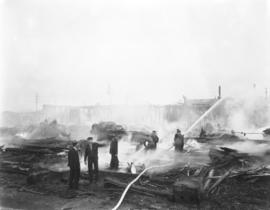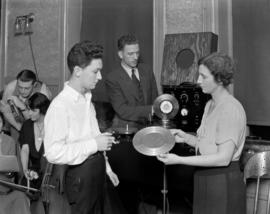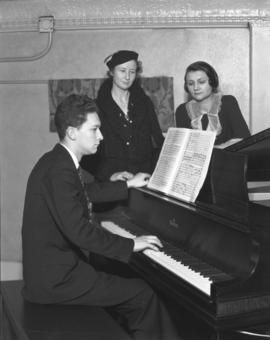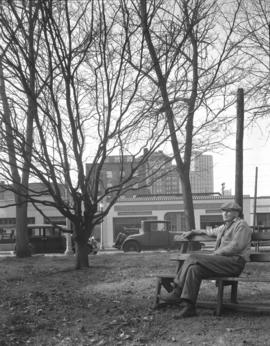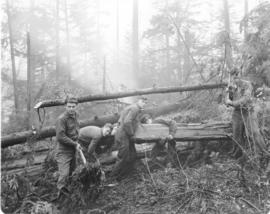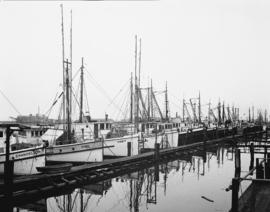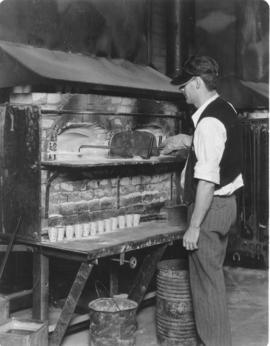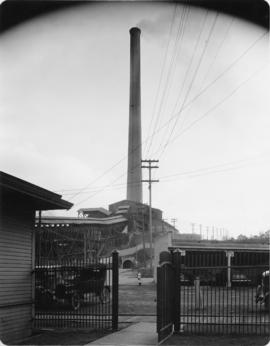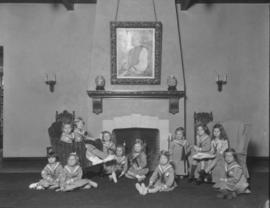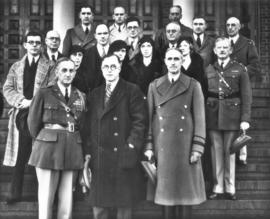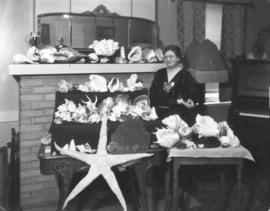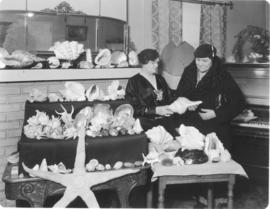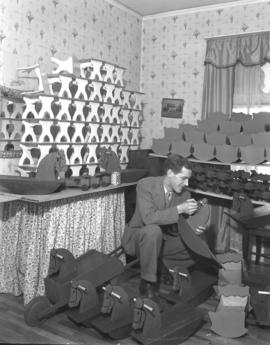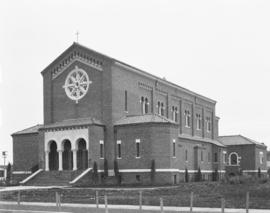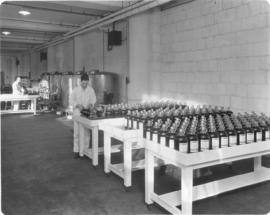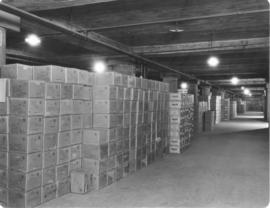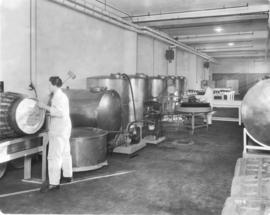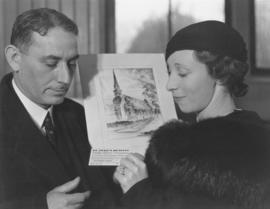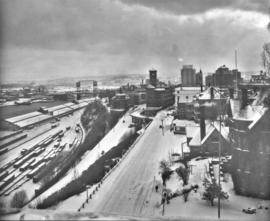Eugene Linden, conductor of the Tacoma Philharmonic Orchestra, tries the key board of an Everett grand piano. Two women beside piano glance down at the oversized sheet music. On the left is Miss Eleanor Perkins, the orchestra's business manager, and on the right is Miss Blanche Yorktheimer, assistant conductor and concertmeister. Eugene Linden was the founder of the Tacoma Civic Symphony (officially named in 1936 the Tacoma Philharmonic Orchestra.) In the early days, the orchestra had no rehearsal hall & rehearsed in the Ted Brown and Evans music stores, the Armory, the Hotel Winthrop and in quarters provided by the musicians' union. By February of 1934, the orchestra had a permanent rehearsal hall at the Scottish Rite Cathedral at 5 South G. Mr. Linden was descended from 12 generations of professional musicians. He had conducted Portland Oregon's renowned Junior Symphony at the age of 17. At 22, he was employed as the assistant conductor for that symphony and was studying under Jacques Gershkovich, himself a student of Rimsky-Korsakov and Tschaikowsky in Russia before the revolution. The brash and ambitious Linden wanted to guide his own orchestra and chose Tacoma as the only Pacific coast city that could support an orchestra and that did not already have one. He arrived in Tacoma penniless, friendless and with no financial backers and founded what became known as one of the finest small symphonies in the country. Mr. Linden and his wife Virginia had three sons, Peter, Philip and Christopher. He conducted the Seattle Symphony from 1948-1950 and founded the Northwest Grand Opera, a Northwest opera touring company that folded due to financial difficulties. Mr. Linden faded from public view, never obtaining his full potential. He died January 16, 1983 at the age of 70 in Lincoln City, Oregon. (TDL 3/11/1934, pg. B-1; TNT 2/28/1934; TDL 12/13/1936; TNT 6/15/1936; picture T. Times 11/10/1934, pg. 1)
Tacoma Philharmonic Orchestra (Tacoma); Linden, Eugene; Pianos; Pianists--Tacoma--1930-1940; Perkins, Eleanor; Yorktheimer, Blanche;
